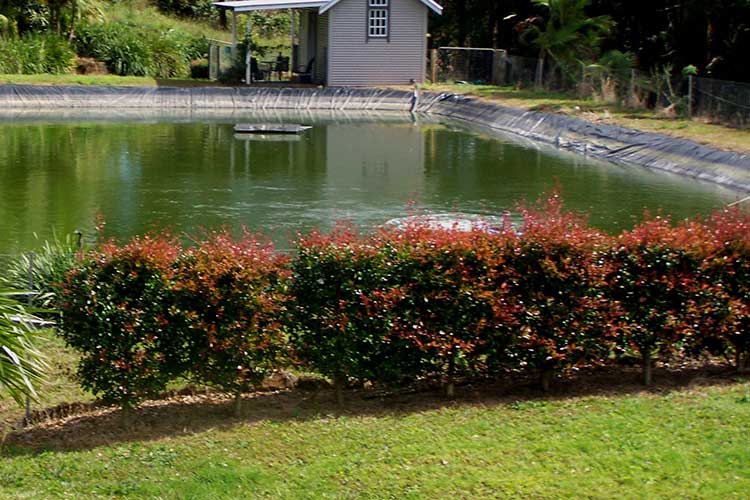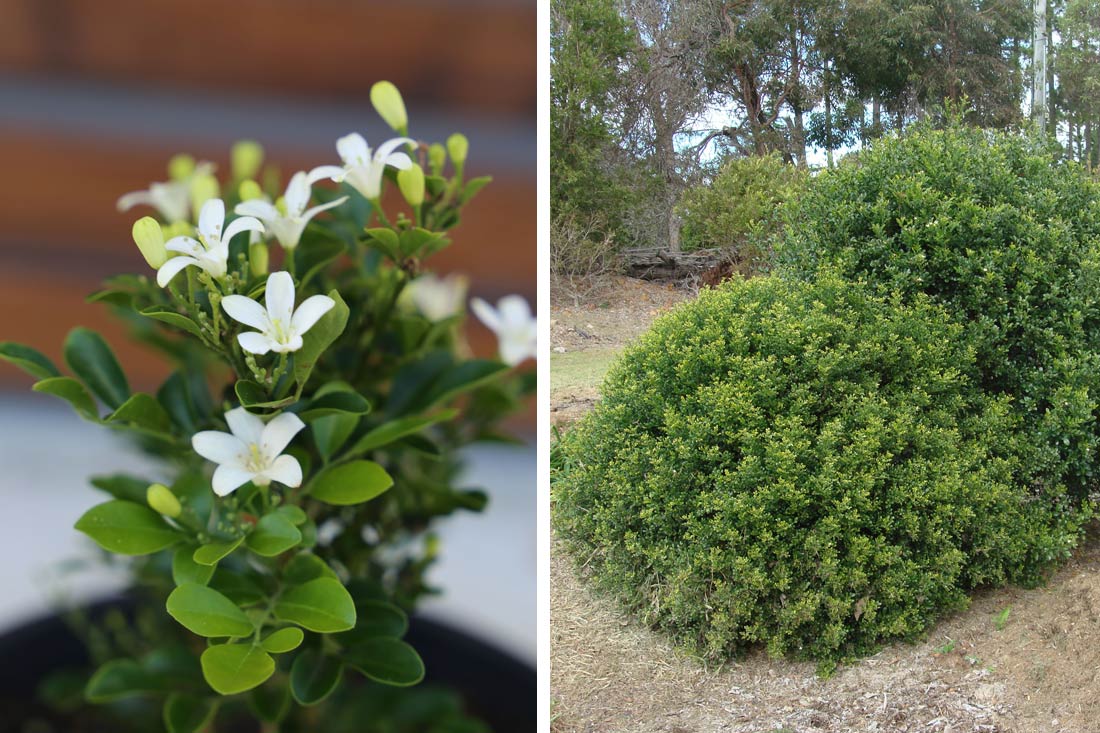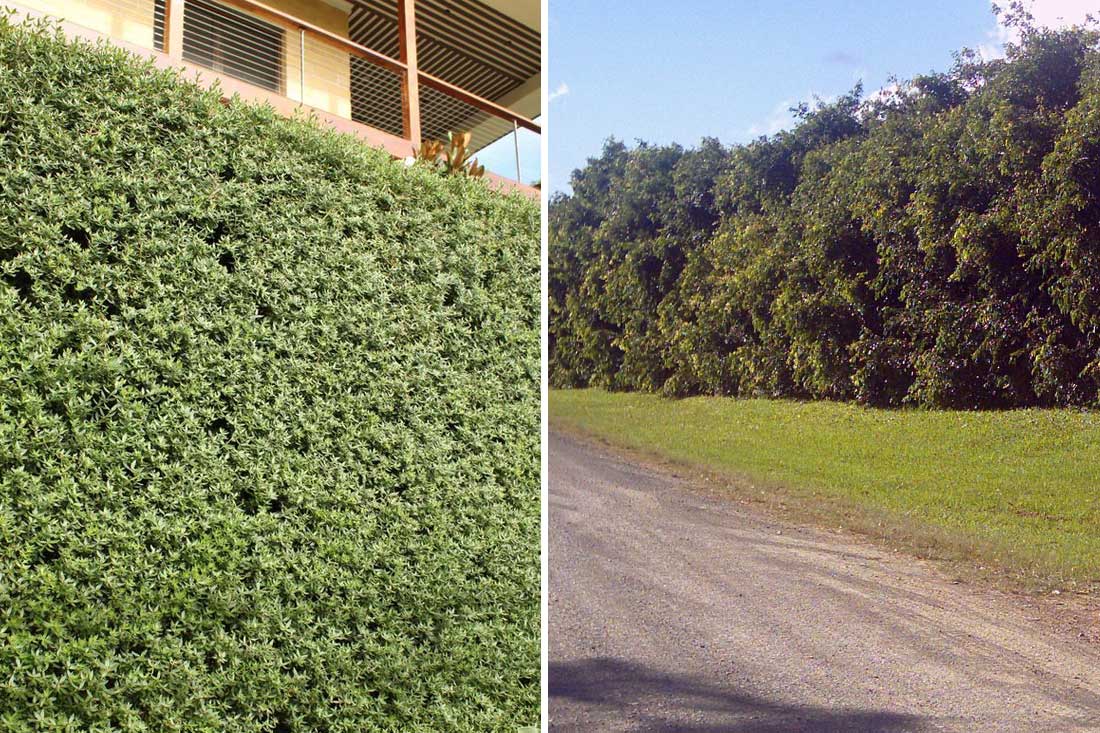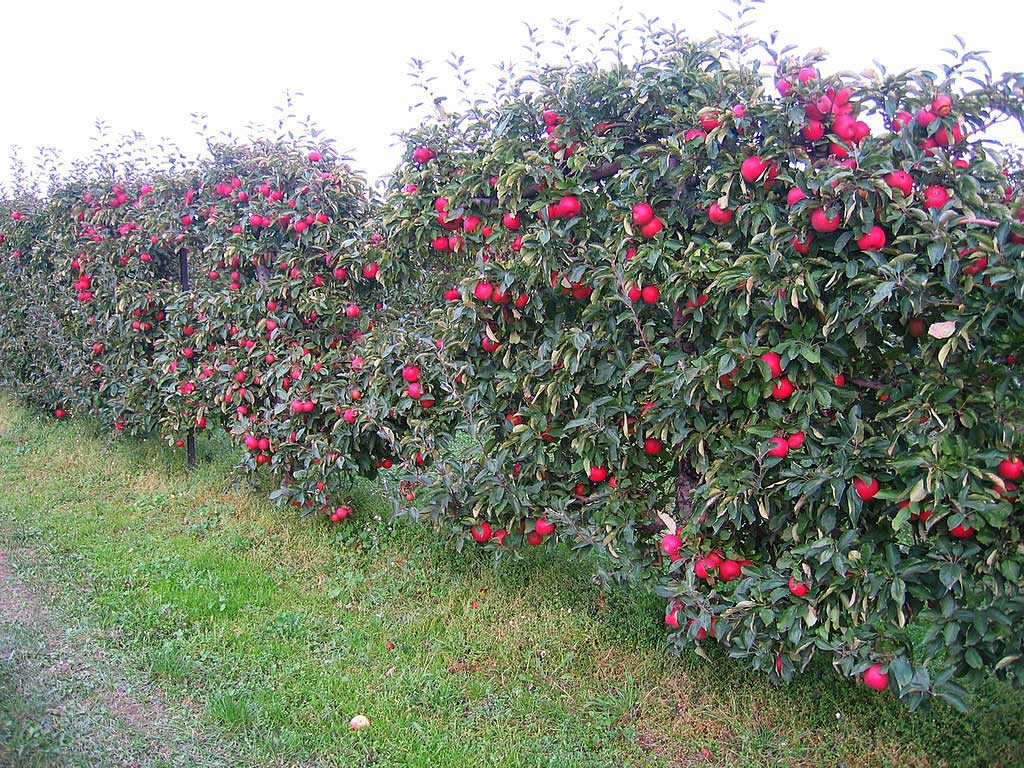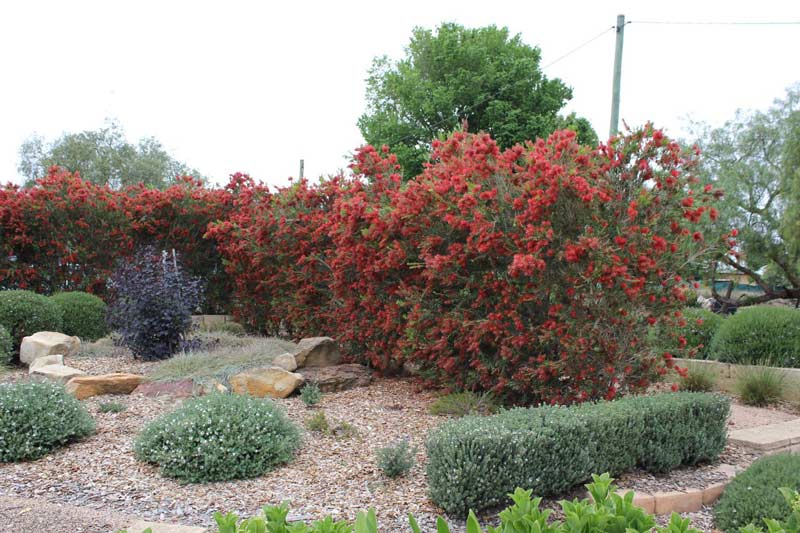Lilly pillies make excellent hedges and being a widespread and hardy native plant makes them an ideal hedge choice for Australia. There are many cultivars available and new varieties being released regularly so choosing one to start a new hedge can be very confusing.
There is a lilly pilly for almost every situation, so an important starting point is to know what sort of hedge you are after, with the most important consideration being the desired height of the hedge. By selecting a plant which grows to approximately the same height as your desired hedge height, you will save yourself a lot of maintenance, and reduce the risk of ending up with a hedge much larger than you envisioned. Most lilly pillies are naturally trees with mature heights well over 10m. There are some new cultivars which are still large-ish trees, so it is strongly recommended that you check the approximate heights on the plant labels and match this as closely to the desired hedge size as possible. Amongst the many varieties available you will find sizes vary from over 5m tall, some 3-5m tall, to many which are 1-3m tall and even a few which will only grow to approximately 1m, making them ideal for low hedges.
A common mistake with lilly pillies is a neglected hedge which turns into a row of small trees with bare lower trunks. This can easily be avoided with good initial plant choice. Unless you actually want a row of trees, you will have a far superior hedge by selecting a lilly pilly cultivar with a mature height of 3m or less. By selecting a cultivar which has dense foliage all the way to the ground, even if the hedge does get larger than planned, it will still feature dense foliage on the lower sections. Sublime™ Acmena smithii ‘DOW30’PBR is a good choice for dense foliage all the way to ground level as is Pinnacle™ Syzygium australe ‘AATS’ PBR.
Over the last 40 years there have been many name changes with lilly pillies and this has led to confusion and misidentification. Gardeners have planted what they thought would be a neat 2m hedge and found themselves with small trees. Most lilly pillies can be maintained as hedges and will not become trees unless the maintenance of the hedge becomes lax. Cutting trees back into a hedge is not an option. It is recommended that named cultivars be purchased for hedges. This reduces the chance of misidentification and you can be far more certain what your plants will do. For example Sublime™ Acmenais a cultivar of the very common lilly pilly Acmena smithii and is sold under the registered name of Sublime™. Purchasing a plant labelled as Sublime™ will give you a far more predictable result than will purchasing one labelled as Acmena smithii.
In general lilly pillies are fast growing plants which can be expected to reach their mature height in 3- 5 years depending on growing conditions. While this can mean fast screening of unwanted views, it can also mean additional maintenance is required to keep them at a desired height. For a smaller hedge, a slow growing variety is ideal as it will require significantly less maintenance than will a faster growing variety. Hobbit™ Syzygium francisii ‘DBK01’PBR is a reasonably slow growing variety which will reach a full height of 3m in 5-6 years. Annual pruning is all that is required to maintain it as a low hedge of 1-2m under most conditions.
Pest and disease resistance is another trait to consider when choosing a variety of lilly pilly.
The most common pest is the pimple psyllid. This is a tiny insect which while in most cases it does not significantly impact the overall health of the plant, it does cause very unsightly “pimpling” especially on new growth. It is best avoided by selecting a cultivar which has been bred to be psyllid resistant, such as Red Head™ Acmena smithii ‘BWNRED’ PBR, Sublime™ or Hobbit™.
The key disease to be aware of is myrtle rust. This is a fungal disease that has been in Australia for a relatively short period of time and has proven very difficult to control to the detriment of many lilly pillies. Cultivars bred since the introduction of myrtle rust to Australia will often have been selected for greater resistance to this disease. Should myrtle rust infect your hedge you may be required to remove the entire hedge with protective covering to limit the spread of the fungal spores, therefore when planning a new planting it is very worthwhile to select myrtle rust resistant varieties. This is particularly so for large hedges or screening trees when treating an infection is impossible due to the height. Sweeper® Waterhousea floribunda ‘DOW20’ PBR is a highly myrtle rust resistant small tree to 10m which provides dense screening. Red Head™, Sublime™ and Hobbit™ are also highly myrtle rust resistant lilly pillies.
Other characteristics that may help you choose a hedge variety will be the colour of new growth. All lilly pillies will feature some colour to the flush of new growth, but in some varieties this has become an outstanding feature. While the foliage colour may be enough to choose a lilly pilly, there is also the bonus of masses of fluffy white flowers followed by edible berries in red, pink purple or white. Sublime™ features new growth in a vibrant lime colour, masses of white flowers in summer but rarely produces berries. Red Head™ features new foliage in a deep red, clusters of small white flowers followed by bright purple berries. Red Head™ has also been shown to be very fire retardant so is an excellent hedge choice in fire prone areas.
A new hedge can be a significant long term investment in a garden so it is well worth doing a little research to choose the plant most closely matching your requirements. Not all nurseries will stock a full range of lilly pilly varieties, so you may need to ask them to help you source the right one. Most nurseries will be happy to help you and the result will be a very rewarding hedge.
*Article published by Kate Wall

